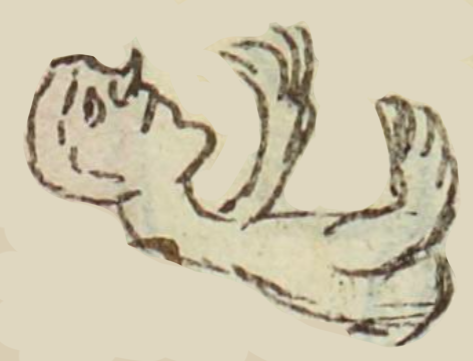Quiyahuac Huetztoc (MH777v)
This black-line drawing of the simplex glyph for the personal name Quiyahuac Huetztoc ("He Lies Fallen Outside" is attested here as a man's name. It shows an unclothed (perhaps meaning vulnerable) man, waist up, on his back, looking upward, and with his arms in the air as though he has fallen (huetztoc). He is probably outside (quiyahuac), although this is not shown visually.
Stephanie Wood
Quiyahuac often means "outside," but in glyphs it is typically shown as a location in the entryway or exit of a building--which is outside, of course. Karttunen also suggests "la plaza."
Stephanie Wood
diego quiahuachueztoc
Diego Quiyahuac Huetztoc (or Quiyahuachuetztoc)
Stephanie Wood
1560
Jeff Haskett-Wood
caído, estirado, tendido, cuerpo humano, nombres de hombres, entradas, afueras

quiyahuac, outside, at the entrance/exit, https://nahuatl.wired-humanities.org/content/quiyahuac
huetztoc, stretched out or fallen, https://nahuatl.wired-humanities.org/content/huetztoc
-toc, lying down, https://nahuatl.wired-humanities.org/content/toc-1
Caído Afuera
Stephanie Wood
Matrícula de Huexotzinco, folio 777v, World Digital Library, https://www.loc.gov/resource/gdcwdl.wdl_15282/?sp=629&st=image
This manuscript is hosted by the Library of Congress and the World Digital Library; used here with the Creative Commons, “Attribution-NonCommercial-ShareAlike 3.0 License” (CC-BY-NC-SAq 3.0).









